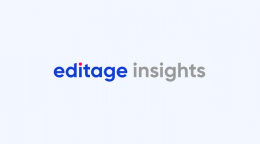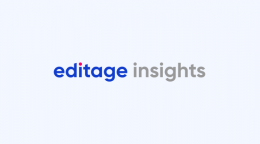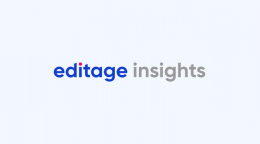How to deal with coercive citation: A case study
Coercive editorial practices
Some journal editors practice leverage over authors submitting their manuscripts to the journal and try to coerce them into citing published articles from the same journal to artificially inflate the journal’s impact factor. This series of posts will help authors understand how to identify a coercive citation request by an editor and how to deal effectively with such requests without ruining their chances of publication in the journal.

Case: An author’s manuscript was sent for peer review and came back with comments from two reviewers and the Editor-in-chief (EiC). The editor had just one suggestion: he wanted the author to include several references in the manuscript. The editor had actually provided a list of articles that he wanted the author to cite. On the other hand, the reviewers had very few suggestions about the literature review, and they had not mentioned any of the articles the editor had.
After going through the list of articles, the author found that all the articles suggested by the editor were from previous issues of the same journal. What was more, most of them were not relevant to his research. He was at a loss to understand why the editor had made such a suggestion. He approached Editage Insights for advice as he did not want to include spurious references in his work, but at the same time, was unsure of how to respond to the editor without annoying him and ruining his chances of acceptance.
Action: Having looked at the list of articles suggested by the editor, we agreed with the author that apart from a couple, almost all the other suggested articles seemed irrelevant. We realized that the editor wanted these articles to be cited to artificially increase the number of citations received by the journal and thereby, increase the journal’s impact factor. However, the situation was indeed difficult for the author. If the author wrote to the editor saying that he did not want to cite the articles that were not relevant, the manuscript might get rejected.
We, therefore, felt that this was one case that might require the intervention of the author’s PI or supervisor. Since the author was an early career researcher, the editor could have coerced him into citing the irrelevant articles, but when dealing with the PI, who was an eminent scholar in the field, the editor would refrain from making an unethical request or rejecting the manuscript just because his request was not met.
We recommended that the author share this problem with his PI and request him/her to write an email to the journal editor about this. The email would begin with a brief biographical outline of the supervisor which establishes him/her as an eminent scholar who was writing on behalf of the author as he/she had provided academic counsel and supervision to the author regarding the paper. The supervisor could then go on to explain that he/she had seen the list of suggested references and had advised the author to include only the ones that were relevant and not the others as, based on the supervisor’s subject area expertise, he/she felt those were not relevant.
The supervisor agreed to help the author and wrote to the journal editor along with the revised submission that included only two of the suggested references. The editor did not mention the spurious references again and the revised paper was sent for a second round of peer review.
Summary: This is a typical case of citation manipulation involving coercion, also known as coercive citation. The Council of Science Editors’ White Paper on Publication Ethics has a section on citation manipulation and flags it as inappropriate behavior. Editors often try to get authors to cite other articles from the same journal. This is done to artificially inflate the impact factor of the journal.
According to a forum discussion by the Committee on Publication Ethics (COPE), coercive citation can “range from a suggestion of the editors to the authors to look whether the journal has published papers that are relevant to the current paper and cite them so that readers can better follow the line of research as published in that journal. This is a rather innocent form of coercion, since there is no threat when the authors do not comply. Demanding to include 2, 3 or more specific references in order to have the paper accepted for publication is unacceptable.” Thus, coercion to the point where citing the specified articles is a requirement for publication and authors feel pressured to comply for fear of rejection is regarded as an unethical practice. In this case, the author does not have the freedom to decide whether the articles are relevant to the study.
However, not all suggestions for adding more references can be regarded as coercive citation. Often, normal citation directions are given during the peer review process as these would help improve the paper. So, how then, can authors identify coercive citation? Typically, in cases of coercive citation, there is no indication that the literature review was insufficient or that the manuscript was lacking in attribution. Neither is it mentioned that a specific body of work or a specific author needs to be cited for a particular reason. When the request to include citations is unethical, it usually just guides authors to add citations from the editor’s journal without mentioning any reason or providing any explanation of what was lacking in the manuscript.
Editors are more likely to try coercive strategies on young researchers as they are more likely to comply out of the fear of rejection. The absence of a regulatory body that authors can approach with complaints and grievances makes it easier for editors to target early career researchers. Therefore, in such cases, it is recommended that senior researchers get involved and offer their guidance and support to help young authors handle such tricky situations. In worst-case scenarios, the senior academics can report the case to the editor-in-chief’s institution. Academic associations and ethics bodies like COPE should come forward to help in condemning this practice.
Recommended reading:
Published on: Aug 18, 2017
Comments
You're looking to give wings to your academic career and publication journey. We like that!
Why don't we give you complete access! Create a free account and get unlimited access to all resources & a vibrant researcher community.

Subscribe to Journal Submission & Peer Review
















